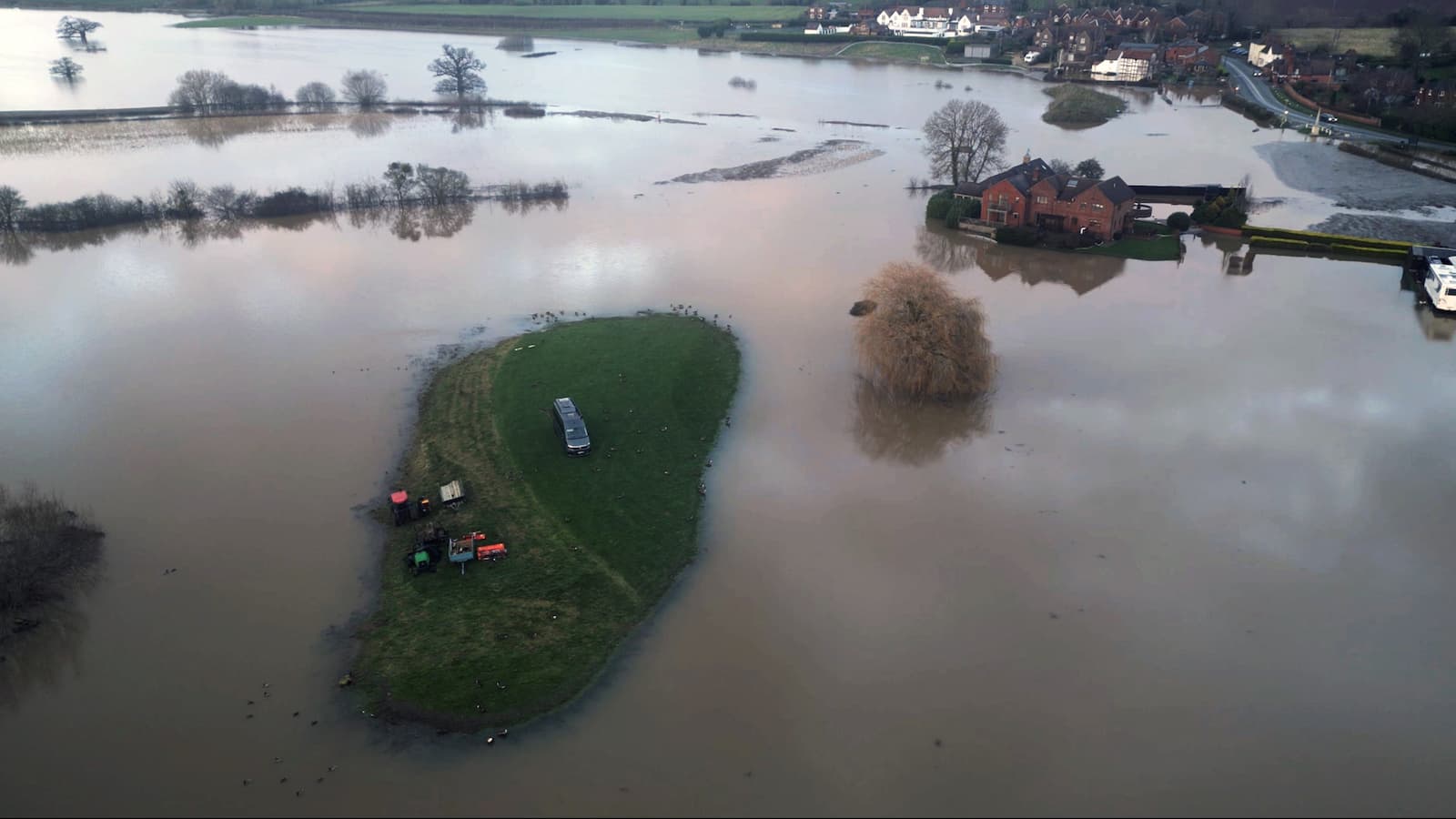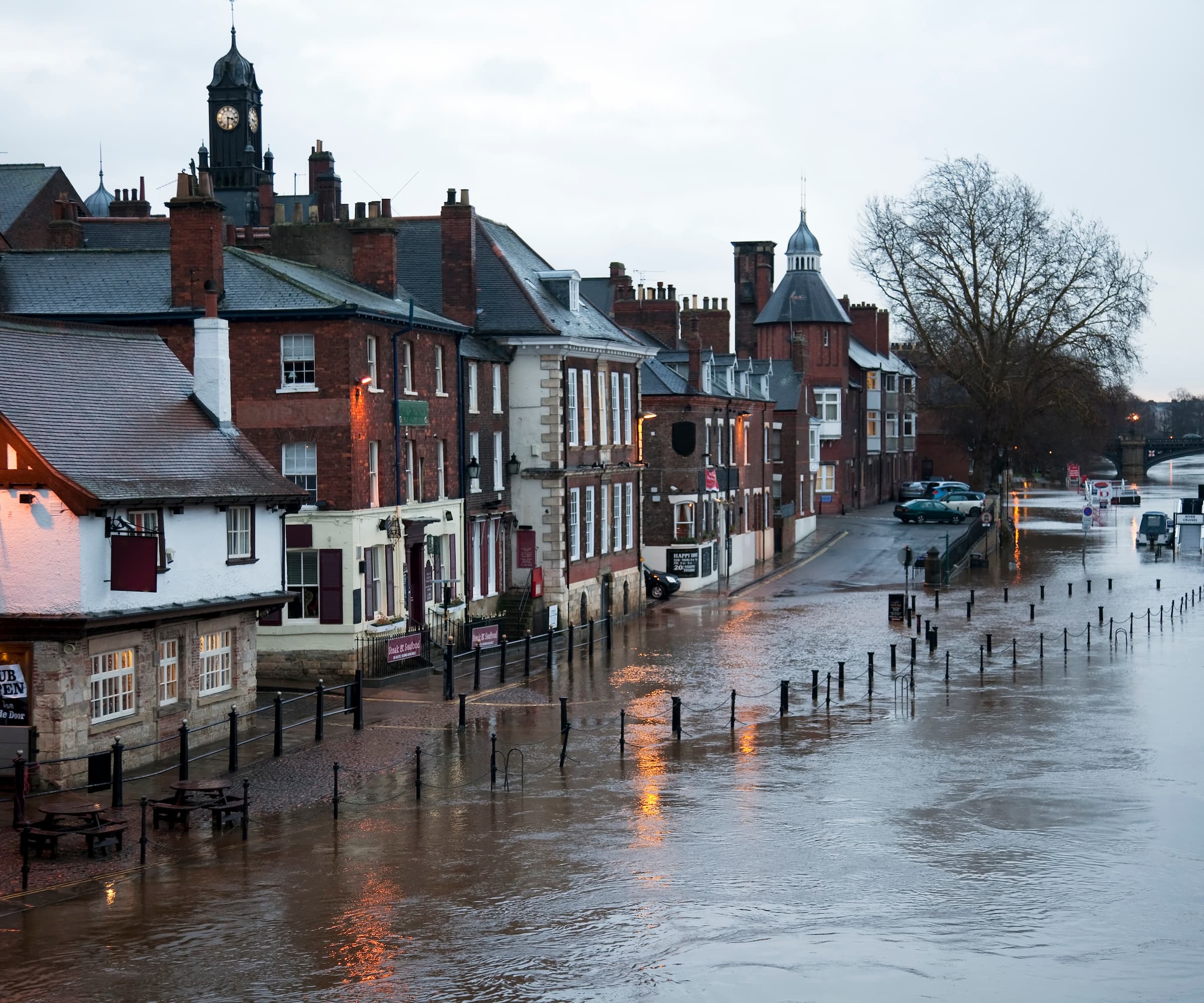Report reveals more homes than ever at risk of flooding due to lack of flood defences and councils approving planning in flood zones
The Public Accounts Committee has revealed 5.7m homes are at risk of flooding and this amount is set to increase further

A report from a group of MPs has warned flooding in homes in England is set to increase due to a lack of flood resilience plans and more homes being built on floodplains.
The report by the Public Accounts Committee (PAC) has also found that in 2022-23, there were 5.7 million properties in England at risk of flooding, according to the Environment Agency, and estimates suggest this number is set to increase due to more one in 13 homes being built on land at risk of flooding with no flood defences.
Research also found that local councils were granting planning permission for homes to be built on land at risk of flooding to meet their homebuilding targets.
Vulnerable neighbourhoods at risk of flooding
Professor Sarah Lindley and her team from the University of Manchester researched which communities in England are most susceptible to flooding and lacking in flood defences.
They found 2,974 communities to be at risk with Birmingham having the highest concentration at 309, followed by Manchester (139), Liverpool (111), Bradford (94) and Hackney (80).
Additionally, 700,000 people in 10% of the most socially vulnerable neighbourhoods are at risk of river, coastal, or surface water flooding because of their location and a probable lack of flood defences.
The recent Storm Franklin caused hundreds of homes to flood in England and Wales due to overflowing rivers.
Get the Homebuilding & Renovating Newsletter
Bring your dream home to life with expert advice, how to guides and design inspiration. Sign up for our newsletter and get two free tickets to a Homebuilding & Renovating Show near you.
Over half of planning authorities fail to check for flood risk

According to forecasts from the Environment Agency, flood protection measures will cover significantly fewer properties than initially planned, by at least 40%.
Various factors, including inflation and bureaucratic hurdles in project approvals were found to have contributed to this shortfall.
The PAC Committee's report sheds light on several issues concerning the government's efforts to prevent flooding in homes, such as new housing developments being constructed in high flood-risk areas without adequate mitigations.
Shockingly, over half of local planning authorities admitted to rarely or never inspecting new developments for compliance with flood risk planning conditions. Additionally, it was found there was a lack of decisive leadership and support from the government to assist local authorities in addressing the escalating risks of surface water flooding.
The Environment Agency revealed to the committee that despite their warnings, the planning inspectorate approved several significant planning applications despite having "no robust plan to build the necessary flood defences".
203,000 homes at higher risk due to poor flood defences
The committee found that the Environment Agency has fallen short of its target to maintain 98% of its high-consequence flood defences due to insufficient funding.
As a result, 203,000 properties are now at higher risk due to deteriorating flood defences. This exceeds the government's aim to protect 200,000 properties through its current capital program by 2027, as noted in the report.
Sir Geoffrey Clifton-Brown MP, Deputy Chair of the Committee, said: “With the reality of climate change and increasing rainfall, robust flood resilience must of course become an ever-increasing priority.
"As we have recently seen once again, the depredations caused by such disasters are a matter of life and death for communities up and down the country. This inquiry has uncovered the alarming truth that in a number of ways, the approach to keeping our citizens safe in this area is contradictory and self-defeating, not least in the continuing development of new housing in areas of high flood risk without appropriate mitigations.
"The number of properties at risk of flooding from deteriorating defences eclipsing those benefitting from new ones is another case in point. This is emblematic both of the government’s failure to strike the right balance between maintenance and construction, and of not considering the net number of properties at risk.
"One of the first steps in delivering any successful policy is clearly defining what success looks like. We hope the recommendations in our report help the government to do so.”

News Editor Joseph has previously written for Today’s Media and Chambers & Partners, focusing on news for conveyancers and industry professionals. Joseph has just started his own self build project, building his own home on his family’s farm with planning permission for a timber frame, three-bedroom house in a one-acre field. The foundation work has already begun and he hopes to have the home built in the next year. Prior to this he renovated his family's home as well as doing several DIY projects, including installing a shower, building sheds, and livestock fences and shelters for the farm’s animals. Outside of homebuilding, Joseph loves rugby and has written for Rugby World, the world’s largest rugby magazine.
